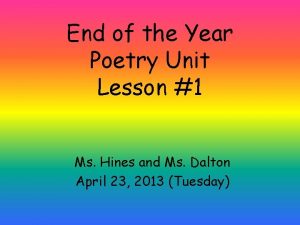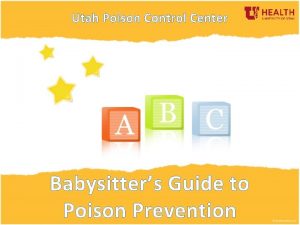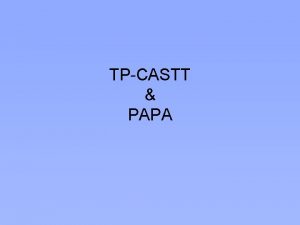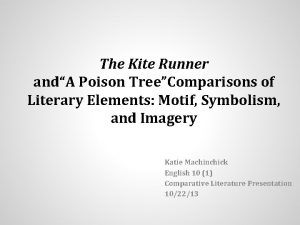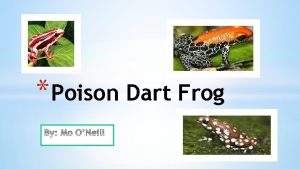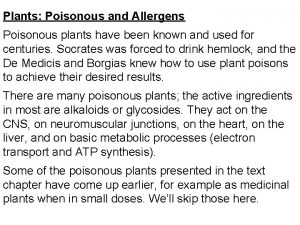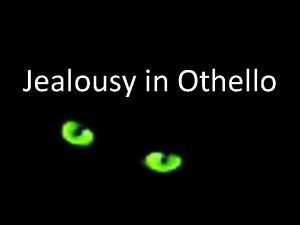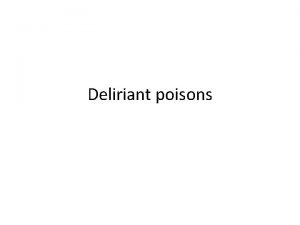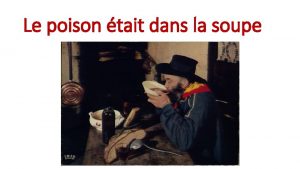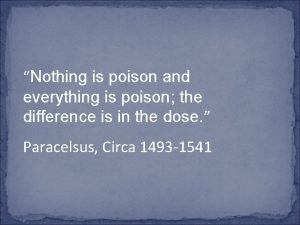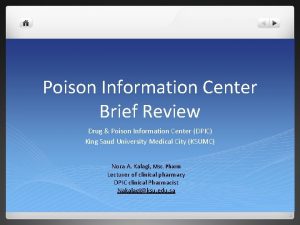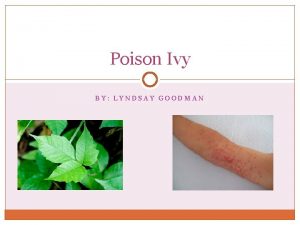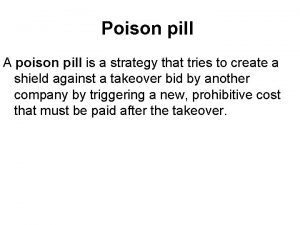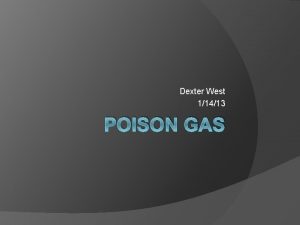Year 10 Poetry Collection Lesson 1 A Poison












- Slides: 12

Year 10 Poetry Collection Lesson 1 – ‘A Poison Tree’ by William Blake

Learning Objective To understand how Blake combines evocative imagery with a powerful rhythm to explore conflicting emotions Outcomes: You MUST annotate your poem independently with as much info as possible. You will need this for your revision next year. Anything you miss, it is your responsibility to catch up/complete Flipped Learning

Context – Who was William Blake? 18 th Century painter, printmaker and poet Part of early Romantic Movement (Byron, Wordsworth, et al) Romanticism reacted against the culture of reason and logic cultivated during the Enlightenment. Rather than order, balance, and proportion, Romanticism emphasised drama, emotion, and subjectivity. Individuality was most highly valued. Order vs. emotion. His work often presents criticisms of social injustices and negative effect of Industrial Revolution. Songs of Innocence and Songs of Experience. Blake particularly disturbed by child exploitation and mentioned that his ideal audience would be children. Worth remembering.

Remember ARTWARS Read poem, note initial reactions It might be helpful to carry highlighters/felt tips with you so you can colour code your annotations. You must be quick with your notes. What is it about? What is happening at basic level? Have you ever felt angry with a friend/loved one? What did you do? Talk or let it fester? Result of this? Dangers of repressing negative emotions and strong feelings. If you talk about things, you resolve problems and diffuse power.

Glossary told spoke about wrath anger foe enemy wiles crafty tricks beheld saw stole crept veil’d hidden pole star or North Star (very bright)

Glossary extended metaphor lexical field variations on a single metaphor that continue throughout a poem or short story choice of vocabulary linked by a single unifying theme symbolism one small thing being used to suggest a larger idea or theme personification using human qualities to describe inanimate objects

Glossary quatrain a stanza of four lines, often having alternate rhymes iambic two syllables, the first unstressed, the second stressed tetrameter trochaic trimeter alliteration line of verse containing four stressed syllables two syllables, the first stressed, the second unstressed line of verse containing three stressed syllables repeated use of the same consonant in a phrase or line

Central message Not expressing anger is like nurturing a poisonous tree Extended metaphor throughout – what is it? Can eventually do serious harm (as evidenced in final stanza) Comparing regression of anger to nurturing a tree of hatred Worst human fault is to fail to recognise tension and it’s destructive effect Instances of alliteration in the poem? Why? Impact of this? Is the conflict between different people or within one person? Or both?

Understanding What does a plant need to grow? Reference to these in poem? Lexical field… Outcome of hatred in poem? Links to anything else? (apple, tree appearances…negative outcomes…? ) Paradox of tree here – usually positive, Tree of Life, etc. AABB regular rhythm – remind you of anything? Why? Iambic tetrameters and trochaic tetrameter produces strong rhythm

Development http: //www. bbc. co. uk/education/guides/zgknv 4 j/revision How does Blake use evocative imagery and a simple poetic structure to explore conflicting emotions in his poem ‘A Poison Tree’?

Peer assessment GCSE Mark Scheme for Paper 2 Section B Level 1 Identification of language, form and structure is minimal. Little evidence of relevant subject terminology. Level 2 There is some comment on the language, form and structure of the text. Limited use of relevant subject terminology to support examples given. Level 3 The response shows an understanding of a range of language, form and structure features and links these to their effect on the reader. Relevant subject terminology is used to support examples given. Level 4 Analysis of language, form and structure features and their effect on the reader is sustained. Relevant subject terminology is used accurately and appropriately to develop ideas. Level 5 The response is a cohesive evaluation of the interrelationship of language, form and structure and their effect on the reader. Relevant subject terminology is integrated and precise.




